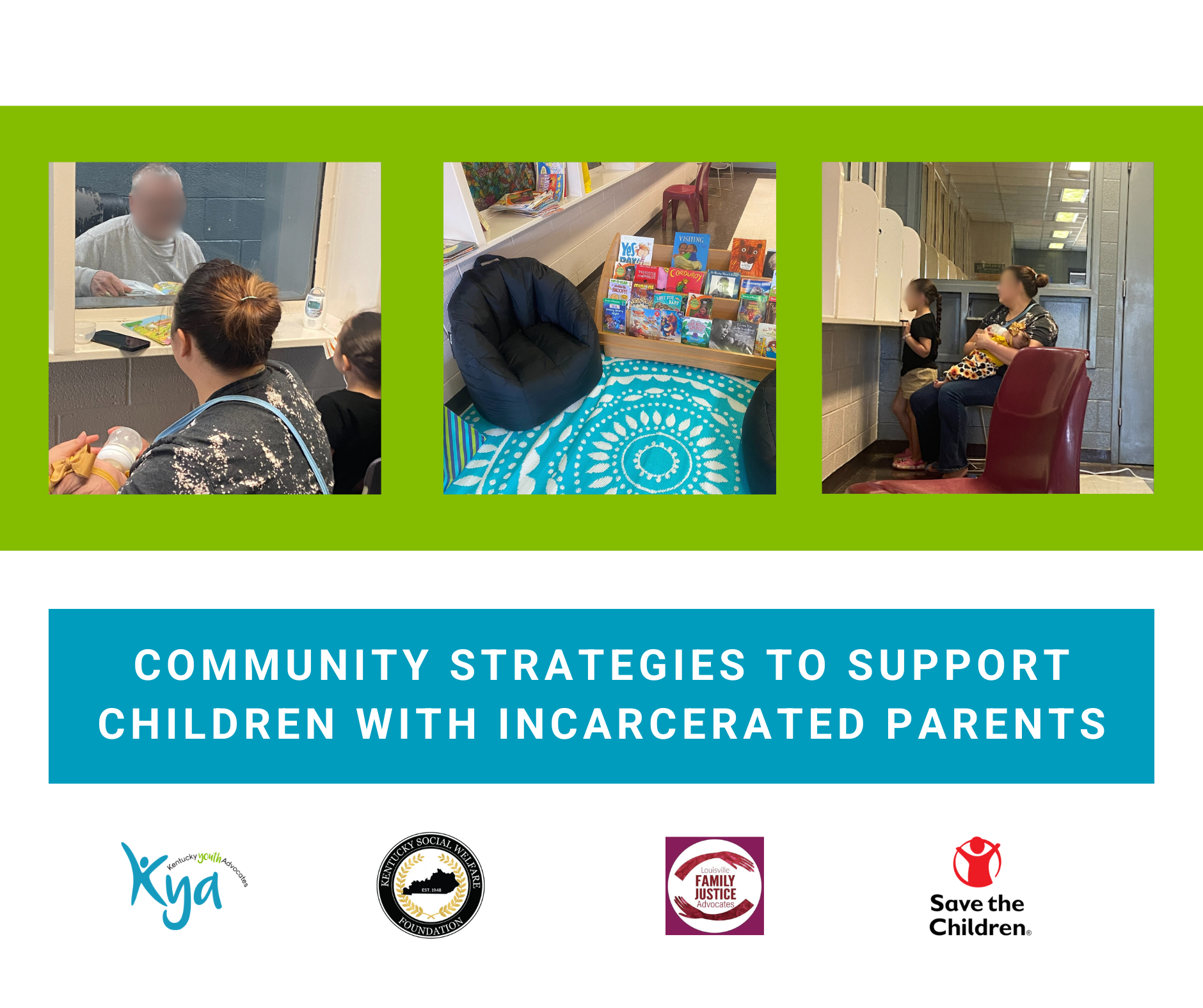By Cortney Downs, Kentucky Youth Advocates intern
 Violence against women and girls is nothing new. Statistics show that females between the ages of 16 and 24 experience dating violence at rates three times higher than the national average, and more than 80% of all sexual assault victims under the age of 18 are girls. What is often overlooked is that many of these girls fall into something called the abuse to prison pipeline; where the outcomes of their abuse go untreated and instead are criminalized.
Violence against women and girls is nothing new. Statistics show that females between the ages of 16 and 24 experience dating violence at rates three times higher than the national average, and more than 80% of all sexual assault victims under the age of 18 are girls. What is often overlooked is that many of these girls fall into something called the abuse to prison pipeline; where the outcomes of their abuse go untreated and instead are criminalized.
Girls who are involved in the youth justice system experience extremely high rates of repeated and complex, or multiple forms of, abuse prior to their incarceration. In some states, more than 80% have experienced physical or sexual abuse; more than 60% have experienced both physical and sexual abuse; and 45% have experienced 5 or more adverse childhood experiences.
Girls are also more likely to develop mental health issues and negative coping mechanisms after being exposed to trauma. However, the National Children’s Traumatic Stress Network found that practitioners often address the behavioral and emotional manifestations of trauma without ever acknowledging the context of the trauma itself. As a result, girls’ mental and behavioral health needs aren’t met and their negative coping mechanisms persist or worsen over time.
Certain behaviors, like running away, truancy, alcohol use, and acting out are some of the most common reactions to abuse for girls. They are also considered status offenses, or acts the youth justice system considers criminal because the person charged is under the age of 18. In 2014, girls accounted for 42% of all status offenses nationally, and in 2016 in Kentucky, children were locked up more than 550 times for status offenses. The Secretary of the Justice and Public Safety Cabinet, John Tilley, said it is “very negative and damaging for these children who are placed in what essentially are juvenile prisons for not having committed a crime.” Criminalizing girls’ reactions to their abuse creates a cycle of continuous victimization, negative coping mechanisms, and subsequent incarceration.
From its inception, a lack of appropriate social, mental, and behavioral health services has been the catalyst for the incarceration of girls for status offenses. In Jefferson County, because of the availability of social services, family court judges rarely, if ever, incarcerate juveniles for misdemeanors or status offenses. However, there are only 4 emergency shelters for youth in Kentucky, leaving those in rural or economically disadvantaged areas with few options other than incarceration.
While prevention and awareness of child abuse are important, access to trauma informed services is critical to disrupting the pipeline to the youth justice system for abused girls. The Substance Abuse and Mental Health Services Administration (SAMHSA) identified four key components to using a trauma informed approach:
- understand how widespread trauma is and that there is no single path to recovery
- recognize the signs and symptoms of trauma
- integrate trauma based knowledge into all practices, procedures and policies
- actively avoid re-traumatizing victims
Trauma informed care and responses are not just for social service providers, educators, or medical professionals, families can also use trauma informed practices in their homes. Studies have shown that doing so can have a positive impact on the long-term mental, behavioral, and physical health of children and their families.
In Kentucky, there are 15 regional Child Advocacy Centers (CAC) that coordinate mental health, medical, law enforcement, and child protective services for child victims of sexual abuse in a centralized location. Many CAC’s also provide counseling services to non-offending caretakers, free of charge.
Legislative efforts have also been made to keep girls who experience abuse out of the youth justice system. In 2014 after the passage of SB 200, a bill that effectively overhauled the Kentucky juvenile justice system, the Family Accountability, Intervention, and Response (FAIR) teams were created. FAIR teams are multidisciplinary groups that work with children and families to address the underlying issues of delinquency and keep children out of the youth justice system. As presented at a Juvenile Justice Oversight Committee meeting in November, 48% of cases that previously would have gone to court were successfully resolved outside of the courts and another 9% of cases were dismissed.
And in 2017, the U.S. House of Representatives and U.S. Senate each passed bipartisan juvenile justice reform legislation that would reauthorize the Juvenile Justice Delinquency Prevention Act (JJDPA), which is more than 10 years overdue. Both bills would prioritize the use of evidence-based practices and prevention services that have proven effective in keeping youth out of the youth justice system. The bills would also improve state-level accountability measures, decrease racial and ethnic disparities, and increase the focus on homeless, trafficked, and other specialized populations.
Call, email, or write to your members of Congress, especially members of the U.S. House Education and Workforce Committee and the U.S. Senate Judiciary Committee, and urge them to pass the JJDPA today! If you’re not sure what to say or are short on time, take a few minutes to fill out this Act 4 Juvenile Justice action alert to Congress. You can also sign up for alerts to be notified anytime the status of these bills changes.
Take action on behalf of the girls across Kentucky who have experienced trauma and are consequently ending up in the youth justice system. It’s up to all of us to end the cycle of trauma.
View the infographic, The Abuse to Prison Pipeline: Gendered Pathways to the Juvenile Justice System here or below.







Leave A Comment